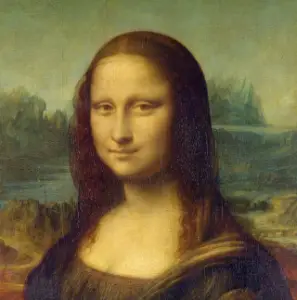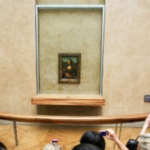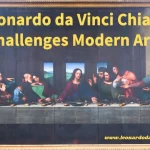Artistic techniques have been pivotal throughout history, shaping how we perceive and appreciate art. One such technique that holds a significant place in the art world is sfumato.
This article will explore the fascinating world of the sfumato technique, its origins, its association with renowned artists like Leonardo da Vinci, and its impact on Renaissance art.
Understanding Sfumato
Sfumato Definition and Origins
The sfumato technique, derived from the Italian word “sfumare,,” meaning “to tone down” or “to evaporate like smoke,” is a remarkable artistic technique with roots deeply embedded in art history, particularly during the Renaissance.
Sfumato is characterized by its ability to create a subtle, hazy transition between colors and tones, resulting in a soft and blended appearance.
Sfumato Technique Explained
The sfumato technique involves delicately layering thin glazes of translucent paint over each other, gradually building up the desired effect. This meticulous approach allows the artist to gradually transition from light to dark or from one color to another, giving the artwork a sense of depth and dimension and a soft, ethereal quality.
What sets sfumato apart from other artistic techniques is its focus on creating a gentle gradation of tones and colors rather than relying on sharp contrasts or defined edges. By subtly blurring the lines between different elements, sfumato adds a sense of mystery, atmosphere, and realism to the artwork.
Renaissance artists pioneered Sfumato
When exploring sfumato, the brilliant Renaissance artist Leonardo da Vinci’s influence is impossible to overlook. Da Vinci perfected the technique and popularized its use in his masterpieces.
Leonardo da Vinci’s works, such as the iconic Mona Lisa in the Louvre Museum, fully exemplify the sfumato technique. Through his meticulous application of translucent layers and gentle blending, da Vinci achieved a sense of softness and ambiguity in his paintings. The delicate, smoky effects of sfumato gave his subjects a lifelike appearance, with facial features almost sculpted and shrouded in a subtle mist.
Da Vinci’s pioneering use of sfumato brought a new level of realism and depth to his artworks, capturing the imagination of artists and art enthusiasts for generations to come. His skillful mastery of sfumato added a touch of enigma to his paintings and elevated the technique to new heights of artistic expression.
Unraveling Sfumato by Da Vinci
Leonardo da Vinci’s Artistic Brilliance
Leonardo da Vinci, a true Renaissance polymath, is renowned for his artistic brilliance and multifaceted contributions to various fields. Beyond his exceptional skills as a painter, da Vinci made significant strides in science, engineering, and anatomy. His relentless curiosity and meticulous approach to art made him a master in his craft and a visionary artist of his time.
Sfumato in da Vinci’s Works
Da Vinci’s mastery of the sfumato technique is evident in numerous works of art, which capture viewers with their subtle charm. The Mona Lisa, arguably his most famous painting, exemplifies this ingenious technique. The delicate layers of translucent paint bring the enigmatic subject’s elusive smile and soft blending of colors to life, creating a sense of depth and evoking an aura of mystery.
Another notable example of da Vinci’s use of sfumato is in The Last Supper. The technique adds a unique atmospheric quality to the painting, with figures seamlessly blending into the background. This contributes to the overall dramatic effect and imbues the scene with a sense of spirituality.
The impact of sfumato on da Vinci’s works is profound. It allows him to capture the subtleties of light, shade, and form in a way that gives his subjects a remarkably lifelike appearance. By employing sfumato, da Vinci achieved unparalleled realism and emotional depth in his paintings, elevating them to the realm of timeless masterpieces.
Legacy of Da Vinci’s Sfumato
Da Vinci’s revolutionary use of sfumato left an indelible mark on the art world, influencing countless artists throughout history. The allure and intrigue of the sfumato technique continue to captivate artists as they strive to emulate the ethereal qualities found in da Vinci’s works.
Da Vinci’s legacy extends beyond his artistic achievements. His innovative approach to sfumato paved the way for future generations of artists, who sought to explore the possibilities of blending colors and creating subtle transitions in their works. The influence of da Vinci’s sfumato technique can be seen in artists’ works across different periods as they embrace and build upon his groundbreaking contributions to painting.
Sfumato vs. Chiaroscuro: Understanding the Differences
Defining Chiaroscuro
Chiaroscuro, an Italian term meaning “light-dark,” is a technique that emphasizes the strong contrast between light and shadow in artwork. It is characterized by bold juxtapositions of light and dark areas, creating a sense of dramatic illumination and depth. Throughout history, artists have used Chiaroscuro to emphasize volume, form, and texture, enhancing the overall visual impact of their creations.
Comparing Sfumato and Chiaroscuro
While both sfumato and chiaroscuro are techniques for manipulating light and shadow in art, they differ in their approach and desired effects.
As discussed earlier, Sfumato aims to achieve a soft and gradual blending of tones and colors, resulting in a subtle and almost ethereal quality. It is focused on creating a gentle transition between different elements, imparting a sense of depth, realism, and mystery to the artwork.
Chiaroscuro, on the other hand, is characterized by pronounced contrasts between light and dark areas. It employs stark variations in brightness to create a strong visual impact and accentuate the subject’s three-dimensionality. Chiaroscuro often utilizes sharp delineations between light and shadow, resulting in striking contrasts and a heightened sense of drama.
While sfumato and chiaroscuro have distinct approaches, they are not mutually exclusive. These techniques often complement each other, with artists utilizing both to enhance the visual impact of their works. Sfumato can be used to achieve subtle transitions within the areas of light and shadow created through chiaroscuro, adding depth and softening the edges for a more realistic and atmospheric effect.
When employed together, sfumato and chiaroscuro create a dynamic interplay between light, shadow, and the spaces between them. This interplay captures the viewer’s attention and imbues the artwork with depth, emotion, and visual intrigue.
The Renaissance Artist Behind Sfumato
The Renaissance Period and Artistic Innovations
The Renaissance lasted from the 14th to the 17th centuries in Europe and was a time of immense artistic and intellectual growth. It was characterized by a renewed interest in the classical ideals of ancient Greece and Rome, which led to significant advancements in various fields, including art, science, and philosophy.
During the Renaissance, artists embraced new techniques and perspectives, striving for realism and expressing the beauty of the human form. The era witnessed remarkable achievements in painting, sculpture, architecture, and other artistic disciplines, setting the stage for developing groundbreaking artistic techniques.
Leonardo da Vinci: The Pioneer of Sfumato
One of the most influential figures of the Renaissance, Leonardo da Vinci, left an indelible mark on the art world through his pioneering spirit and innovative artistic techniques. His contributions extend far beyond his mastery of sfumato.
Leonardo da Vinci’s pioneering role in developing the sfumato technique cannot be overstated. He refined and perfected the method through meticulous experimentation and exploration, elevating it to new heights of artistic expression.
His ability to create soft transitions and subtle blending of colors and tones revolutionized the art world, inspiring generations of artists to follow in his footsteps.
Furthermore, da Vinci’s contributions to art extended beyond sfumato. His artistic genius encompassed various subjects, including anatomy, perspective, and composition.
Da Vinci’s dedication to understanding the intricacies of the natural world and his keen observation skills allowed him to create paintings that captured not only the physical appearance of his subjects but also their inner essence.
Da Vinci’s holistic approach to art and relentless pursuit of knowledge made him a true Renaissance man. His scientific inquiries and innovative artistic techniques inspire artists and scholars alike, solidifying his place as one of history’s most significant artistic pioneers.
Final Thought
In this article, we have explored the captivating world of the sfumato technique, an artistic method that has left an indelible mark on the art world. We began by understanding the definition and origins of sfumato, tracing its roots to the Renaissance period. With its soft blending of colors and tones, the sfumato technique adds depth, realism, and an air of mystery to artworks.
We delved into the role of Leonardo da Vinci, who perfected the sfumato technique and popularized its use. His masterpieces, such as the Mona Lisa and The Last Supper, showcase his mastery of sfumato, which gives his subjects a lifelike quality and a sense of intrigue. His contributions to sfumato and art have had a lasting impact, inspiring generations of artists.
We also explored the differences between sfumato and chiaroscuro, highlighting how they each contribute to the visual impact of the artwork. While sfumato focuses on subtle blending and soft transitions, chiaroscuro emphasizes dramatic contrasts between light and shadow, creating a sense of depth and intensity.
With its artistic innovations and advancements, the Renaissance provided fertile ground for developing techniques like sfumato. Artists at this time sought to push boundaries, achieve realism, and capture the beauty of the human form.




 Leonardo Bianchi,
the creator of Leonardo da Vinci's Inventions.
Thank you for visiting
Leonardo Bianchi,
the creator of Leonardo da Vinci's Inventions.
Thank you for visiting